
As we did last year for our tiny house project, we partnered again with the nonprofit organization Hijas del Campo, which supports farmworkers in Contra Costa County. Given that we had only a dozen students, we chose a project that was easily manageable for a small team and required little help from professionals. Based on conversations with Hijas del Campo, we realized that a portable rest station would be a great way to provide workers with a shaded, comfortable spot for lunches and breaks at multiple farms — allowing us to benefit many people throughout the county.
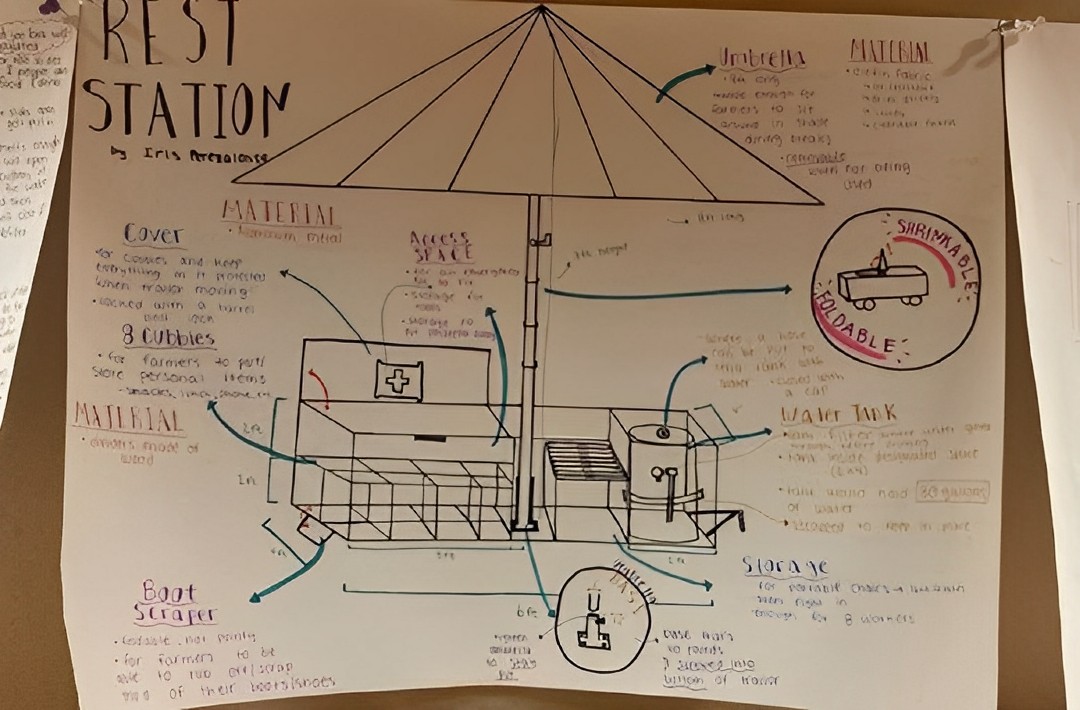
During the first semester of the class, we focused on the design of the rest station. The planning process was difficult, because most of us had never even seen anything like what we wanted to build. We had lots of ideas, including sunscreen storage and mini-refrigerators to store lunches, but this was more of a shopping list of things that we could buy and stick onto a cart. So as the first semester came to a close, we still had a lot to figure out, and we decided it was best to just dive in and start building.
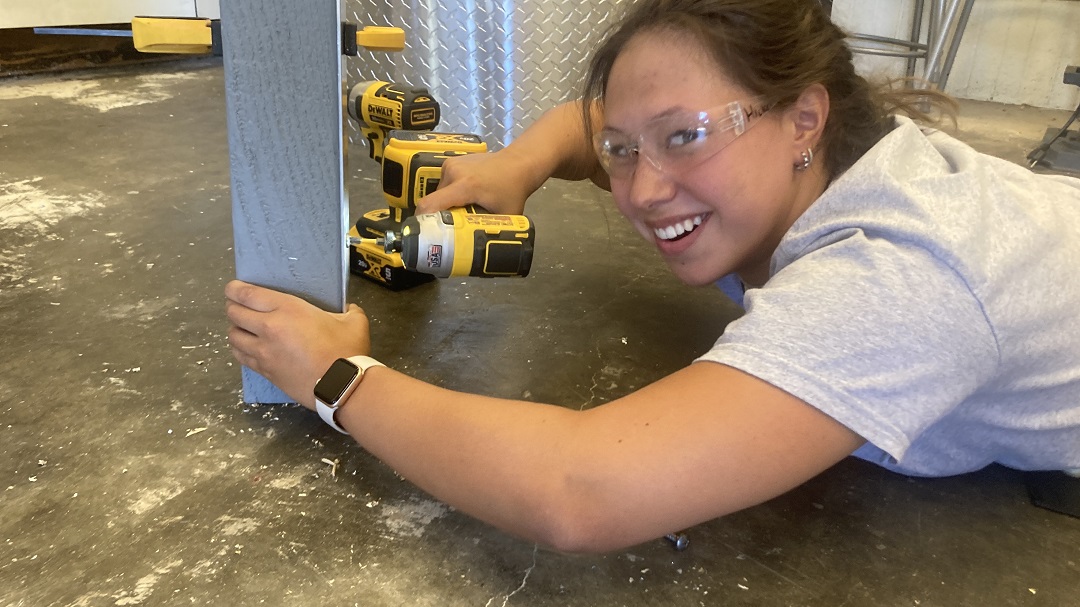
As we started construction, we worked in small teams that varied depending on how big the task was that day. During our end-of-class recap, it was always interesting to learn what each team had accomplished, because you were often so focused on your own project that you didn’t realize what was going on around you. While my team was working on the aluminum framing, there were other teams focused on cutting the plywood walls, building the shelves, or cutting the diamond plate siding. It was a very team-oriented project, and we couldn’t have completed it without each other. In this classroom, no one person was better than another.
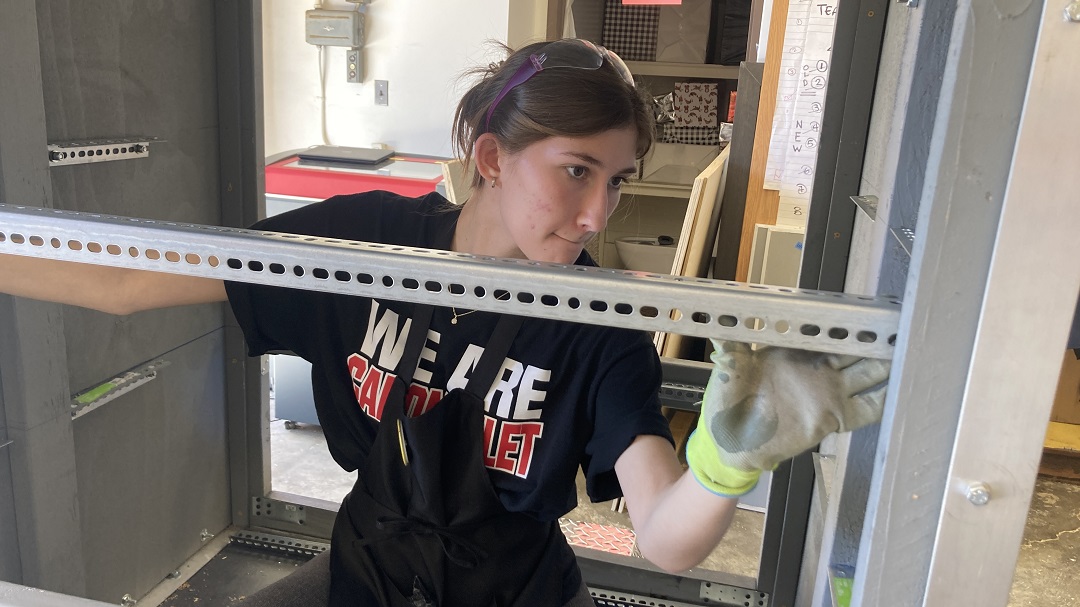
Building the rest station was an incredible hands-on learning process, and we learned more from it than any regular classroom experience could have taught us. If you made a mistake, you couldn’t hide it, because that small mistake would continue to affect other pieces of the project. But by seeing each mistake, you would gain more confidence. It tested your patience, and taught you that if at first you didn’t succeed, you should rethink your idea and try again. There weren’t many things that we got right on the first try. Actually, I don’t think that we got anything right on the first try! Each paint job needed to be redone, most of the holes we drilled would not line up with the ones we drilled in the last class, or the screws would not fit.
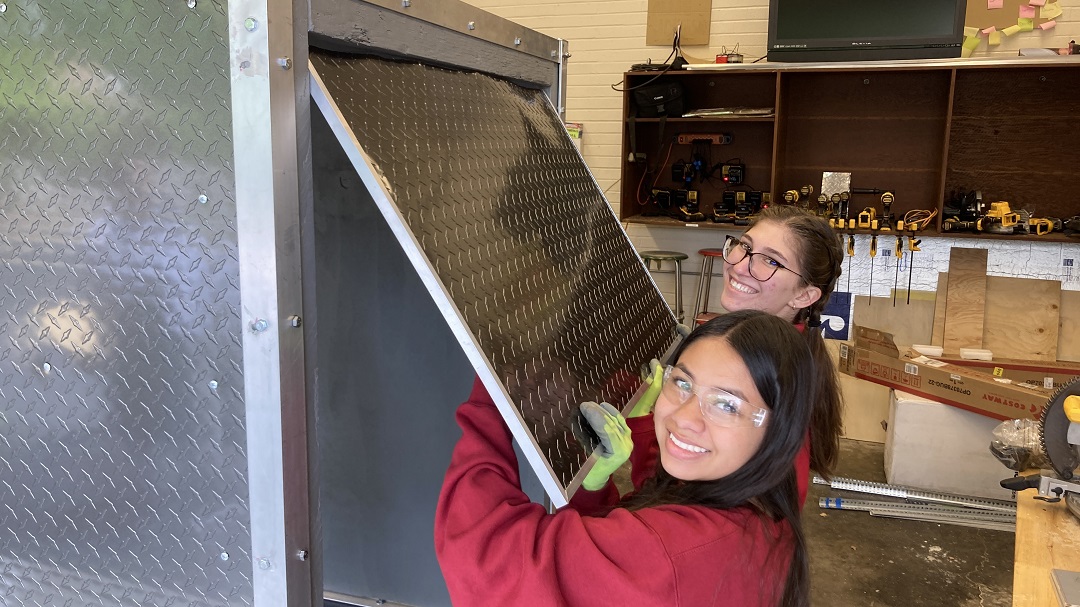
Even though each step was stressful, having to rethink and redesign our ideas helped us understand how to deal with issues. Because our class was small, we were able to bounce ideas off of each other to figure out the best possible solution to fix our mistakes. These brainstorming sessions would happen throughout the class, but our big aha’s came at the end of each class period when we realized that nothing we had planned for the day had worked out quite the way we expected it would.
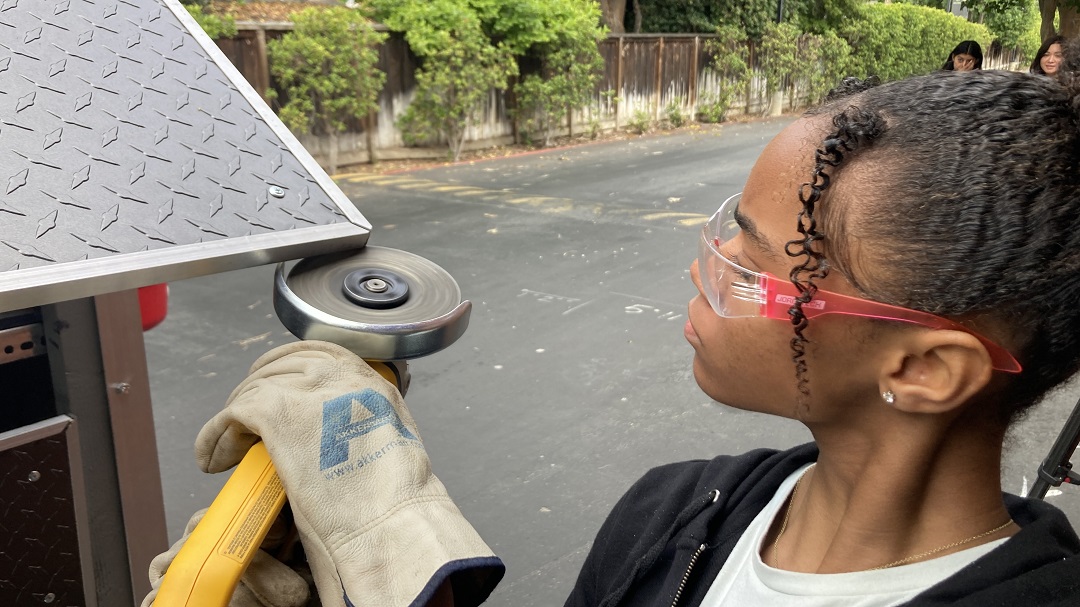
For most of us, it was our first project of this scale and a learning experience in design, construction, using power tools, and cutting metal. Everybody pitched in and helped when they could. Some students came in after school and on Saturdays to help us stay on track. They were eager and willing to give up their time because we all were focused on completing a project that was going to make a real difference in people’s lives.

After multiple setbacks, everything came together quickly at the end. It was an exciting day when we got the full frame attached to the trailer and realized just how strong it was. From there, we were able to quickly install the walls, shelves, doors, the umbrella, and all the final touches.
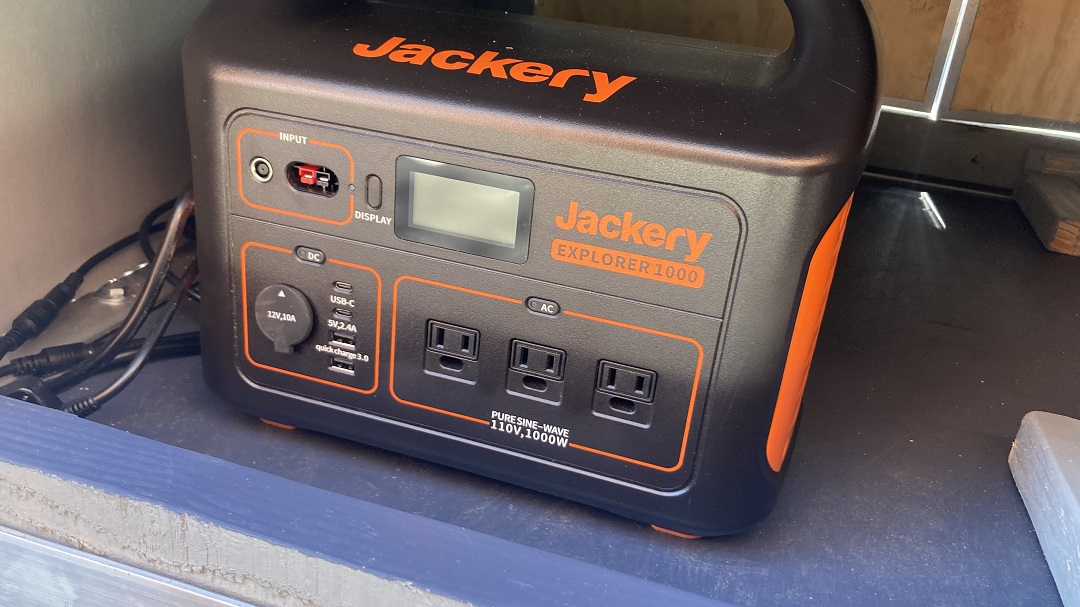
The final rest station includes a jug for filtered drinking water, seating and shade, a place to store food and personal items, a boot scraper, and a solar-powered portable battery that supports a lockable phone charging station, a fan, a speaker, and more.

It wasn’t easy, but I’m so proud of what we accomplished and how we built something that makes a real difference in our community. We’re very grateful for this opportunity, and especially thankful to have great sponsors like Simpson Strong Tie for supporting young women who pursue careers in STEM.



